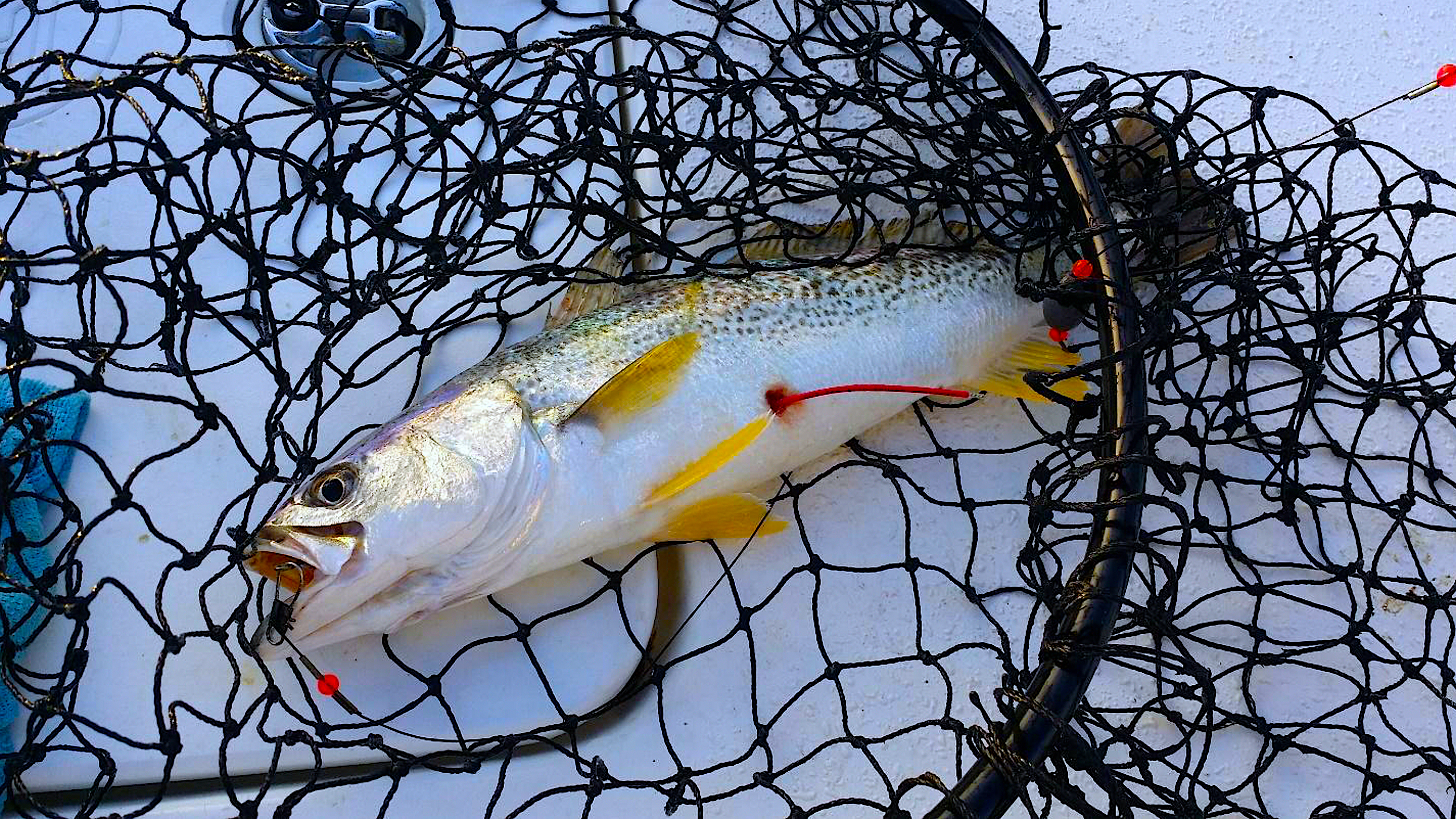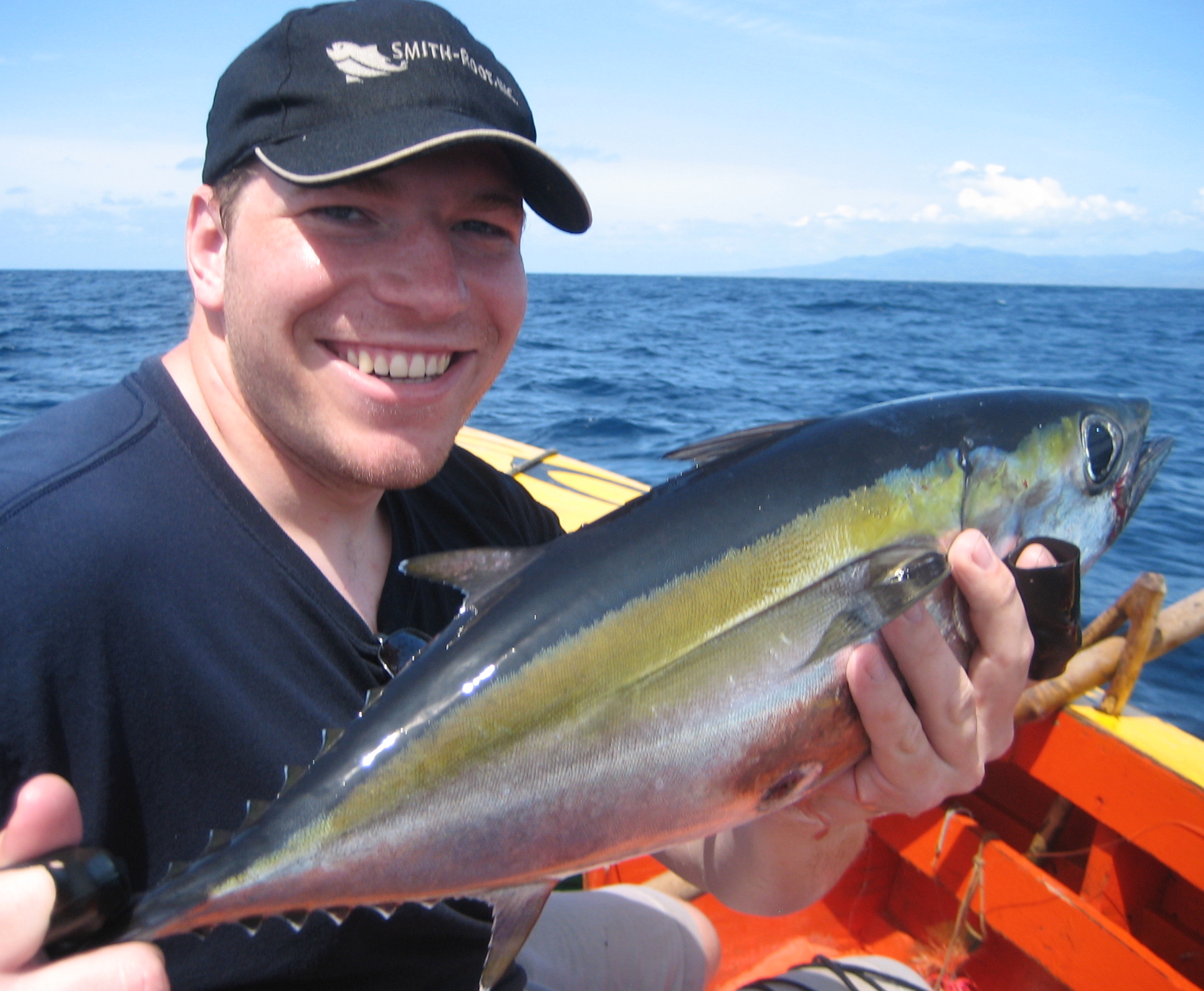What’s Killing Weakfish?

Natural mortality — not fishing — has kept weakfish stock in decline.
Research Need
Weakfish have been in decline since the 1980s, despite harvest restrictions. Fisheries management, including harvest quotas for recreational and commercial sectors, rely heavily on available data on weakfish mortality, but these quotas can be a topic of considerable contention.
Natural mortality is notoriously difficult to estimate, often relying on indirect methods typically used in stock assessment models and, less frequently, on direct methods, such as tagging. But what if natural mortality might be impairing stock recovery efforts?
For our study, we sought to clarify the impact of natural mortality on the population of weakfish on the Atlantic Coast.
What did we study?
We tagged approximately 3,600 weakfish across eastern North Carolina from 2013 to 2017. We estimated natural and fishing mortality, using information from fishing recaptures, as well as data from a fishery-independent survey. We then compared our mortality estimates with those from the most recent weakfish stock assessment.
What did we find?
Natural mortality far exceeded fishing mortality, accounting for 97% of the overall mortality during the years of our study. By contrast, the most recent stock assessment estimated natural and fishing mortalities to have contributed equally towards total mortality.
Anything else?
Our study also found that natural mortality was highest during the fall to the spring, when weakfish leave their estuaries to overwinter offshore. Since many weakfish predators follow the same overwintering patterns, such as striped bass and common bottlenose dolphin, we hypothesized that predation is a potential cause for the increased natural mortality during that time.
So what?
Recent weakfish stock assessments have continually refined estimates of natural mortality based on best available data, and we hope that our findings will be useful to future weakfish stock assessments. With natural mortality currently driving weakfish population dynamics, further harvest restrictions would most likely be ineffective in stock rebuilding.
Reading
Krause, J. R., Hightower, J. E., Poland, S. J., and J. A. Buckel. 2020. An integrated tagging and catch-curve model reveals high and seasonally-varying natural mortality for a fish population at low stock biomass. Fisheries Research. https://doi.org/10.1016/j.fishres.2020.105725.
Research funding was provided by proceeds from the sale of North Carolina Coastal Recreational Fishing License (NCDEQ Task Order #5110).

Summary compiled by Jacob Krause (left), a fish biologist stationed at the USGS Western Fisheries Research Center’s Klamath Falls Field Station in Oregon. He has worked as a postdoctoral researcher studying the effects of hypoxia on the Gulf of Mexico shrimp fishery at the NOAA Beaufort Laboratory and also has estimated cobia survival while at NC State University. The weakfish research presented in this article was part of his doctoral dissertation under Jeffrey Buckel and Joe Hightower at NC State’s Center for Marine Sciences and Technology in Morehead City. His dissertation focused on the sources, magnitude, and timing of weakfish mortality across the U.S. East Coast.
top photo: Tagged weakfish, photographed by Benjamin Almond, a recreational angler.
The text from Hook, Line & Science is available to reprint and republish at no cost with this attribution: Hook, Line & Science, courtesy of Scott Baker and Sara Mirabilio, North Carolina Sea Grant.
- Categories:



